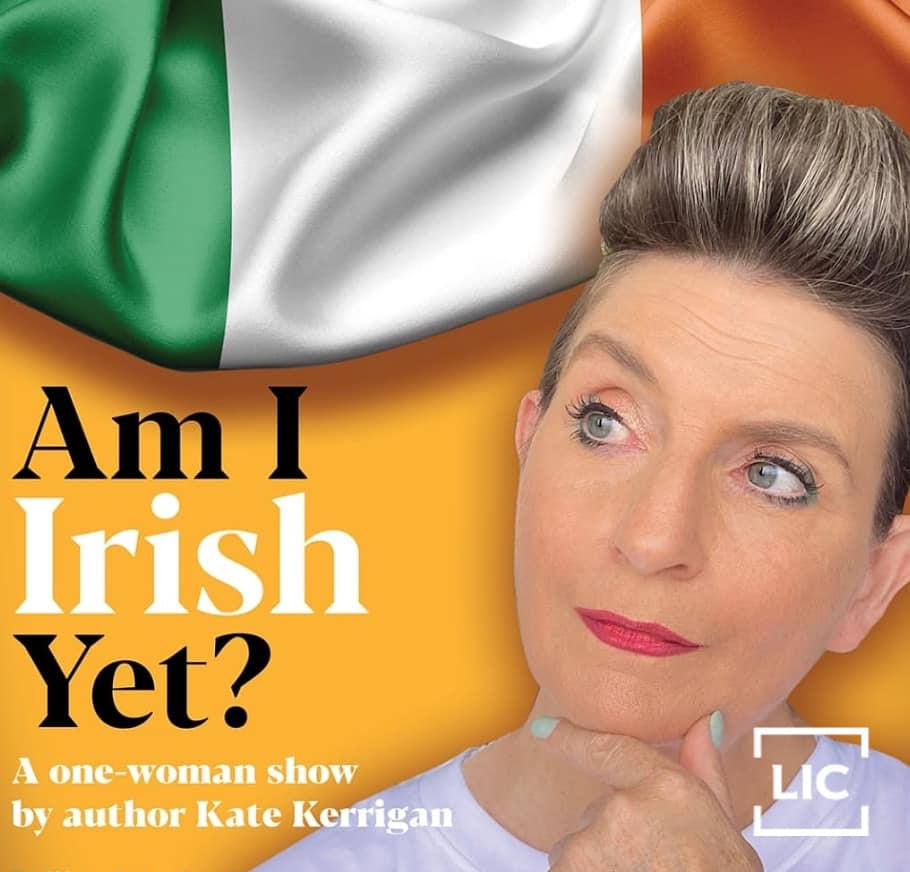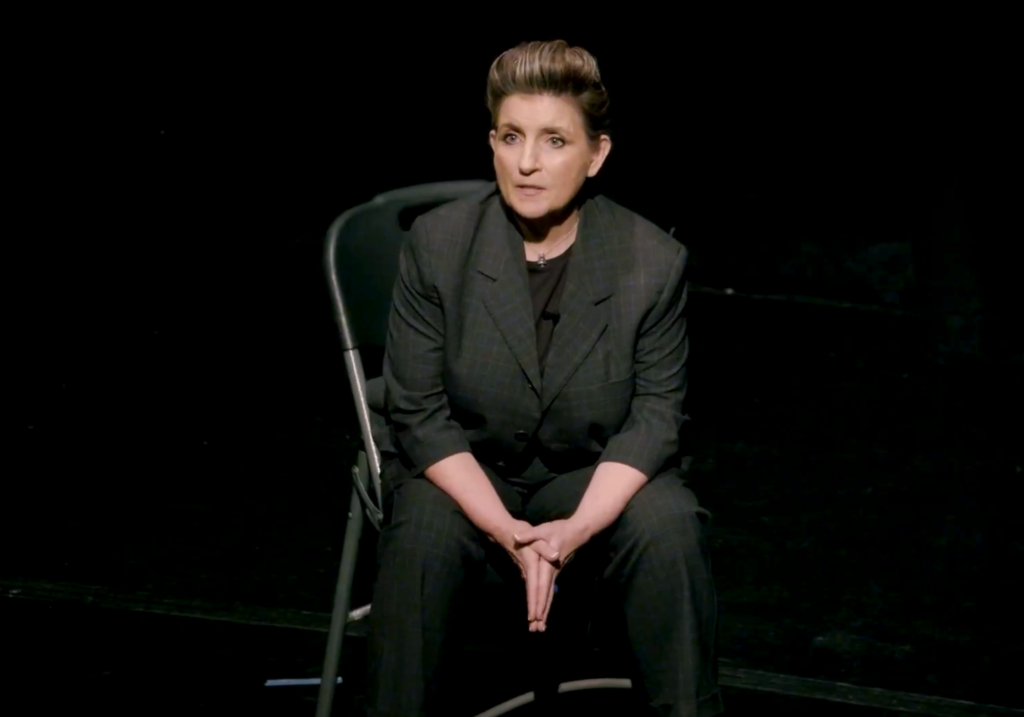Mary Kenny is impressed by Kate Kerrigan’s one-woman show Am I Irish Yet?
 Kate Kerrigan in Am I Irish Yet?
Kate Kerrigan in Am I Irish Yet?IT WAS a full house recently at London’s Irish Centre in Camden when Kate Kerrigan gave her one-woman performance show Am I Irish Yet? You could feel the swell of recognition and empathy as Kate – the nom de plume of novelist Morag Prunty – delivered her hilarious personal narrative of growing up in London, with a London voice and accent, but “feeling” so strongly Irish.
Kate’s parents, like so many in times gone by, had migrated to Britain and she grew up formed by both British and Irish culture.
But when she returned to Ireland, first to work and later, to live near Ballina — her mother’s home town in Co Mayo — she sometimes found herself stigmatised with the “Plastic Paddy” label.
The “Plastic Paddy” is a somewhat derogatory expression alluding to “the cultural appropriation evidenced by unconvincing non-native Irishness”, according to the dictionary definition: in other words, those who fake being Irish for reasons either of sentimentality, or of fashion.
As Kate riffs during her show – “everyone loves being Irish now” – with associations from U2 to Ulysses. Yet, for those of genuine Irish heritage brought up in Britain, often they’re not accepted as being “real” Irish, and that can be hurtful.
Kate recounts her family and personal experiences with a light-hearted, comedic touch. She was born in Scotland, but grew up in north London, imbued with a sense of Irishness by her parents Tom and Moira Prunty. They would have been strong republicans and observant Irish Catholics – Tom was actually a gifted head teacher of a London primary school which, as it happens, my eldest son attended as a young boy. “We were the educated Irish,” Kate emphasises, half in self-deprecation, but also in rebuttal of the disparaging stereotypes sometimes then invoked of the “thick Paddy”. (The Pruntys claimed, with some justification, kinship to the celebrated, literary Brontë family – and indeed Patrick Brontë was originally a Prunty from the Irish Midlands.)
Provo bombs in England didn’t, as Kate tells it, make life easier for the Irish community, though her Dad – now dead – would have had historical sympathies with the “’Ra”. But then she found herself in close proximity when the Harrods bomb exploded just before Christmas 1983, and that was a kind of reality-check.
She had trained as a hairdresser – working in posh Knightsbridge – but she broke into magazine journalism when she was still a teenager, and made her way through the world of the media. She also began writing romantic novels.
But there was always this quest to be Irish and in 1991 she was appointed as editor of the glossy Irish Tatler magazine in Dublin. However, she discovered that there could be many different class layers to Irishness, and the smart, even pretentious, Dublin media world wasn’t to her taste – even though she was successful at it. “Dublin isn’t Ireland” – no, and never has been!
Moreover, back in Ireland, she met with mockery with a “Plastic Paddy” theme – how could she be Irish if she spoke like a Londoner?
Although Kate carries off her narrative in an entertaining way, there’s a serious point at the heart of the story – we all want to establish our identity, and our roots. When she performs the show, people tell her “this is my life story” and she feels she is “giving voice to so many people – about something that hasn’t always been voiced before.”
Perhaps, too, she has brought more understanding to Irish-British relations. When she has done the show in Ireland, individuals have confessed to her that, yes, they do “belittle the English, now that you’ve pointed it out”.
She has come to feel that sub-consciously, some people in Ireland may nurse a sense of guilt because so many Irish people emigrated to Britain back in the 1950s – nearly half a million over the decade – and the emigrants were often abandoned by those who stayed at home. (Indeed, it wasn’t until 1980 that the Irish state even acknowledged the welfare of Irish emigrants.)
Kate, now 59, is the author of ten successful novels – her Recipes for a Perfect Marriage was shortlisted for Romantic Novel of the Year – and her Ellis Island trilogy, focusing on emigration, was on the New York Times bestseller list for many weeks. But it was during lockdown that she conceived the idea of her one-woman performance (which will premier in Scotland at Glasgow’s Óran Mór on 29 April - and there will be more performances in England during the year.)
She’s been married to an Irishman for many years, has two Irish-born sons and her home overlooks the beautiful Killala Bay in Co Mayo. But she still asks herself “Am I Irish Yet?”, and in doing so, speaks to so many people who can wholly identify with that British-Irish duality.
 Kate onstage
Kate onstageAm I Irish Yet? is touring UK and Ireland. See tour dates here https://circus250.com/shows/am-i-irish-yet or email [email protected]

